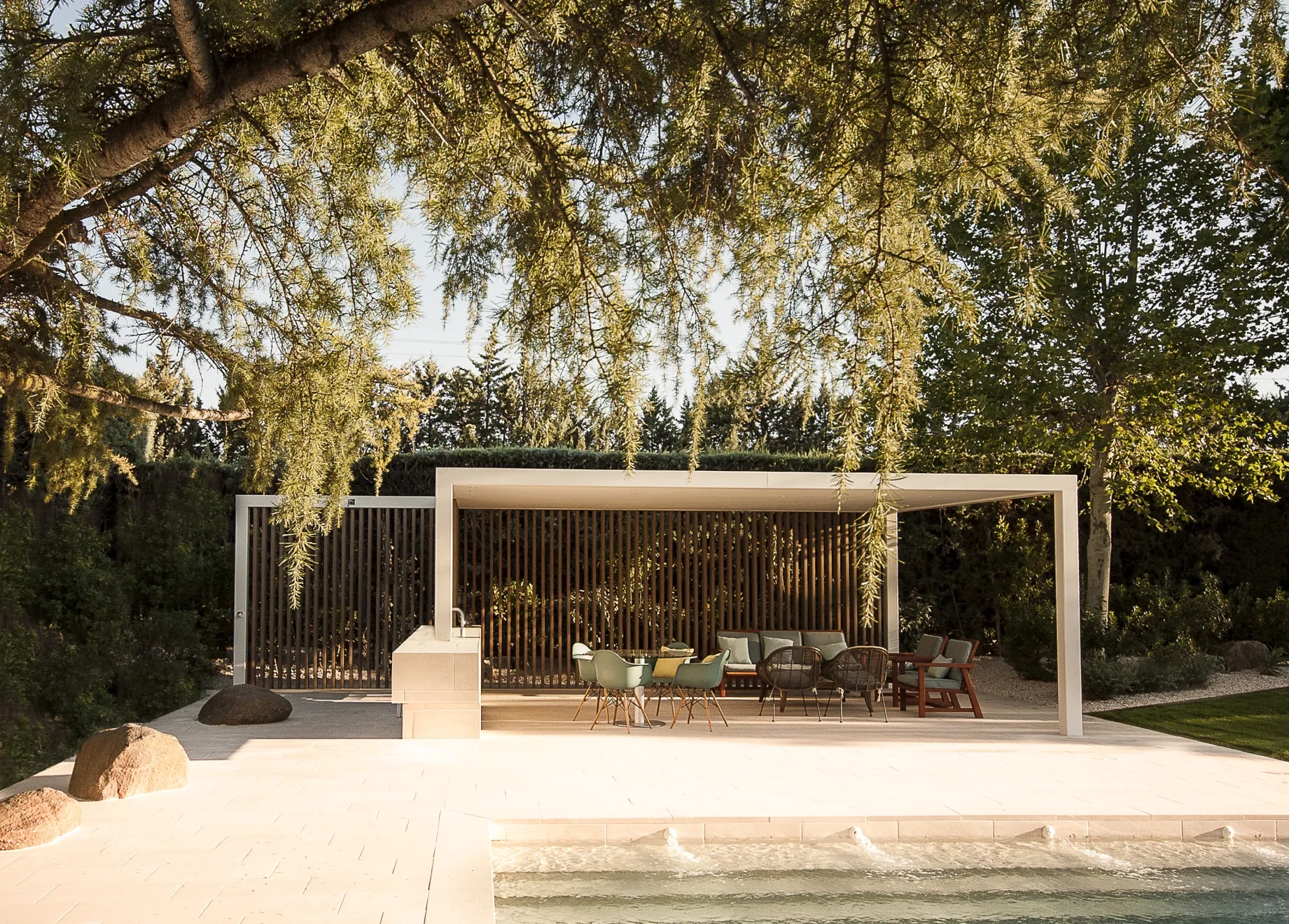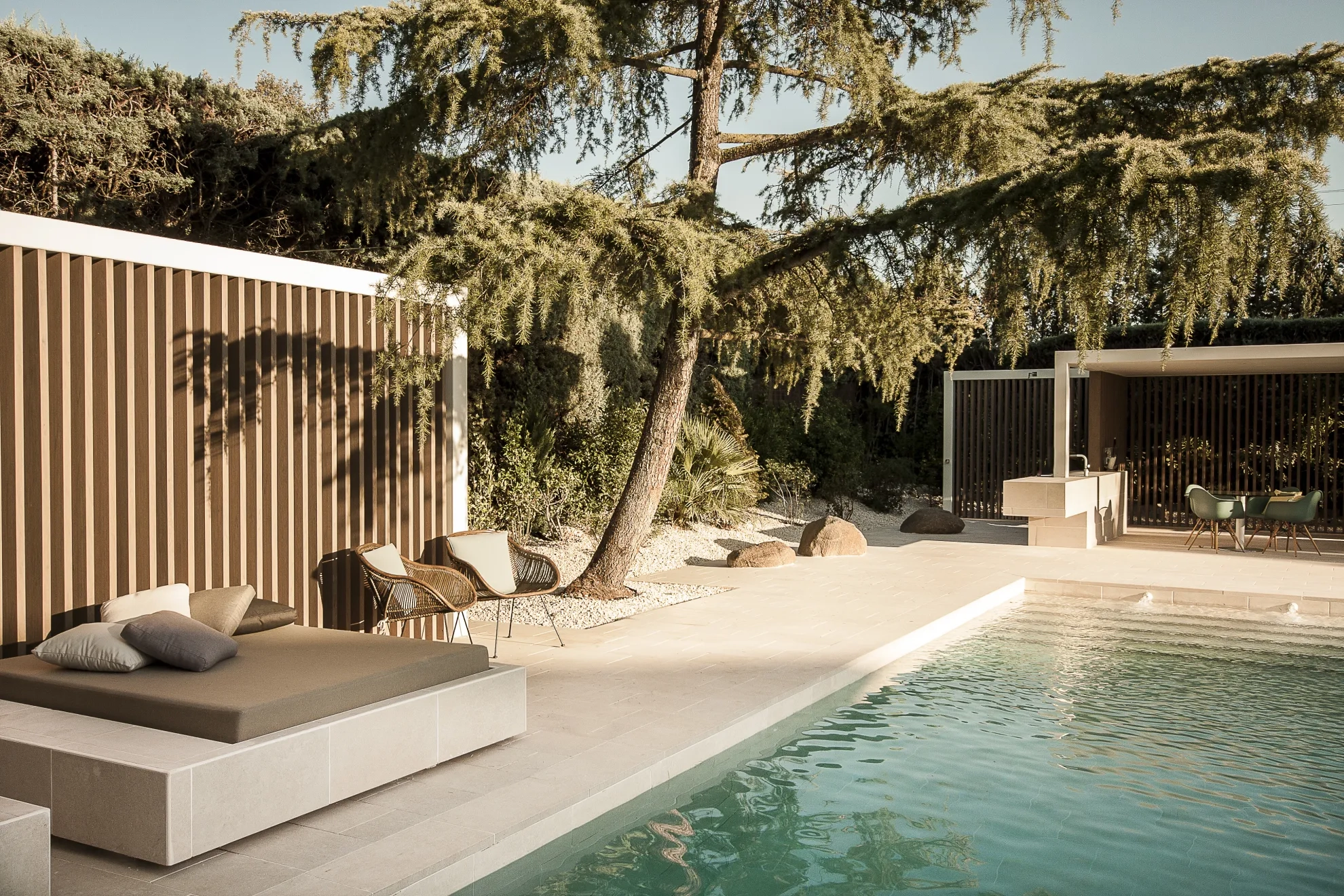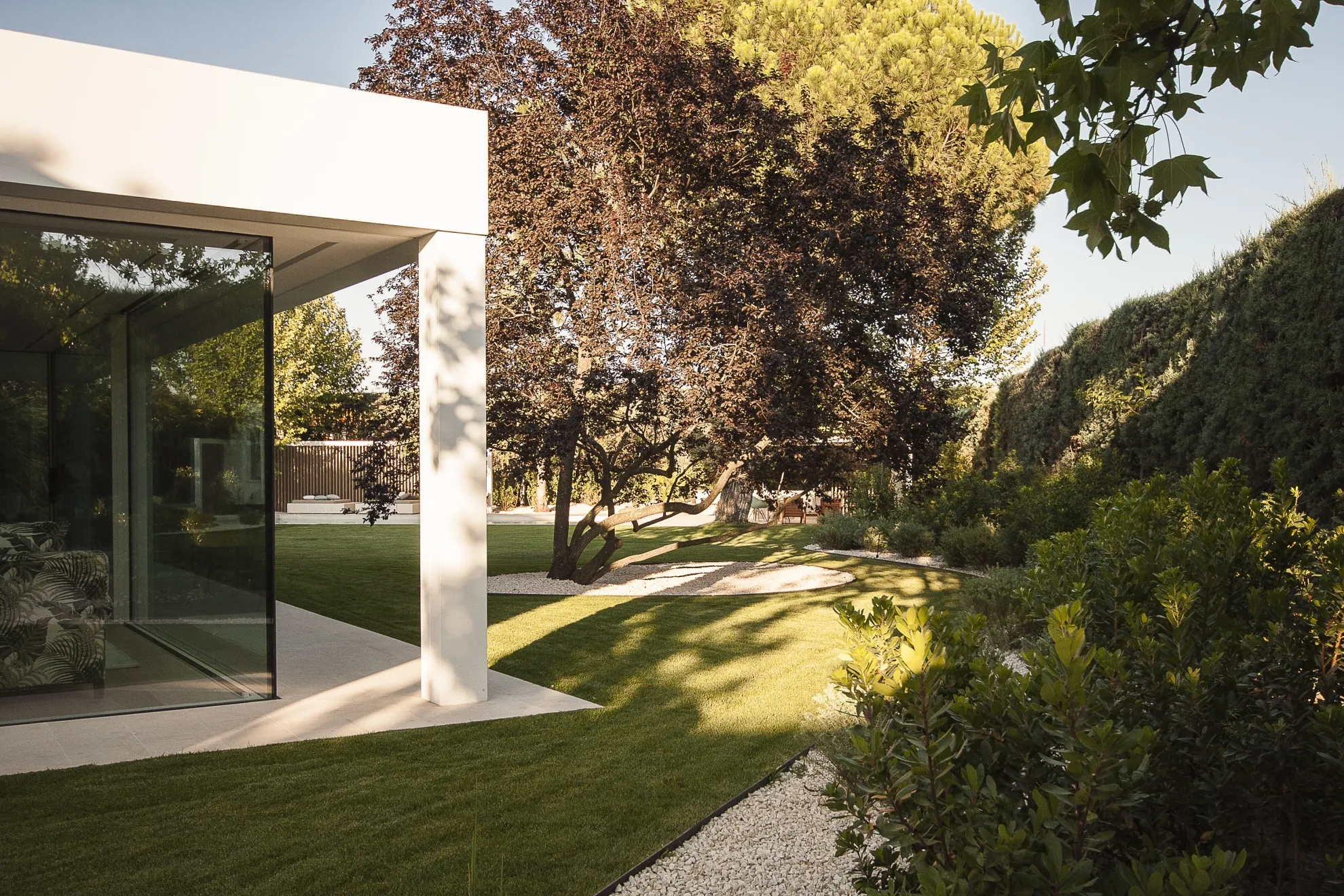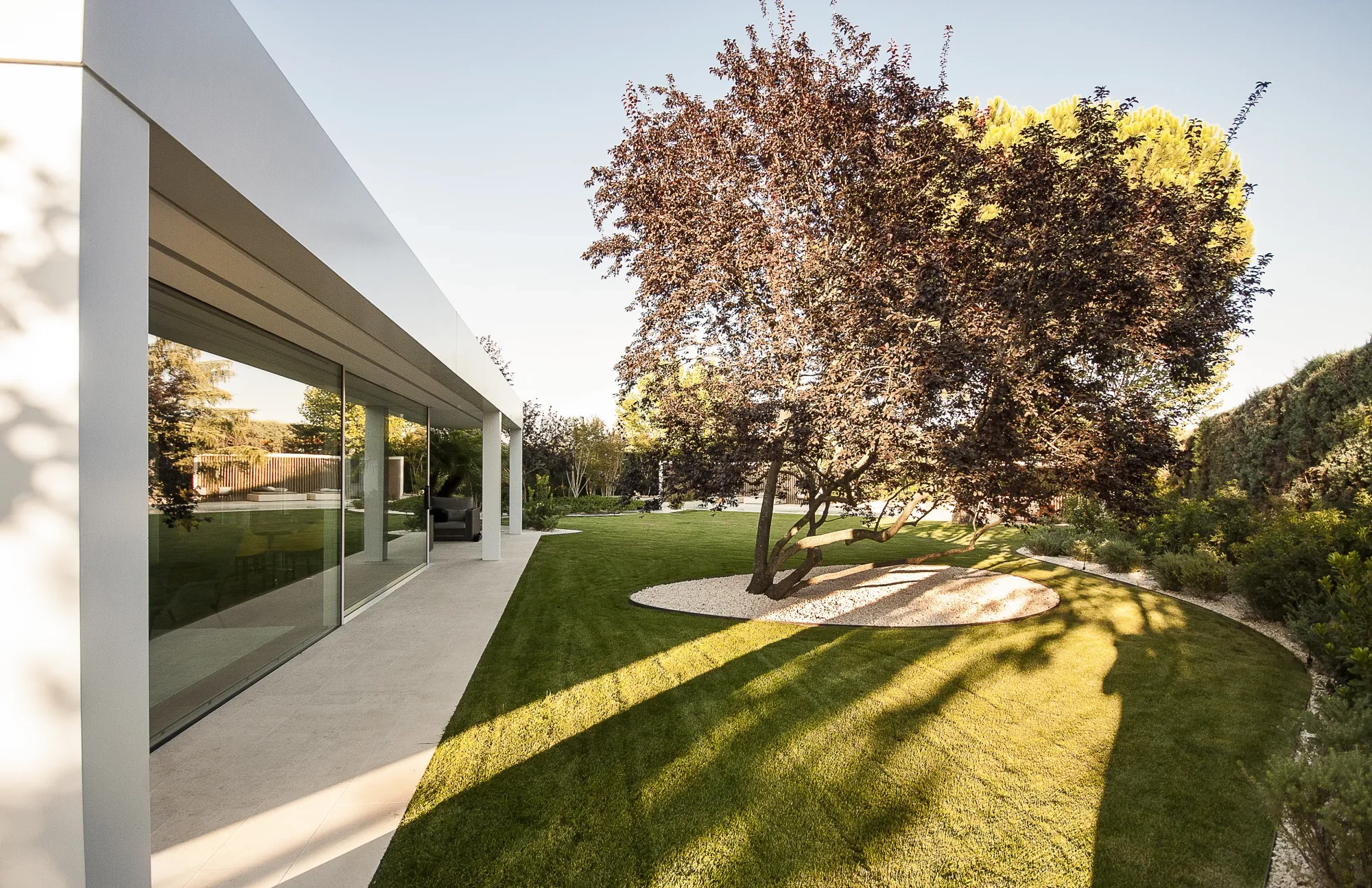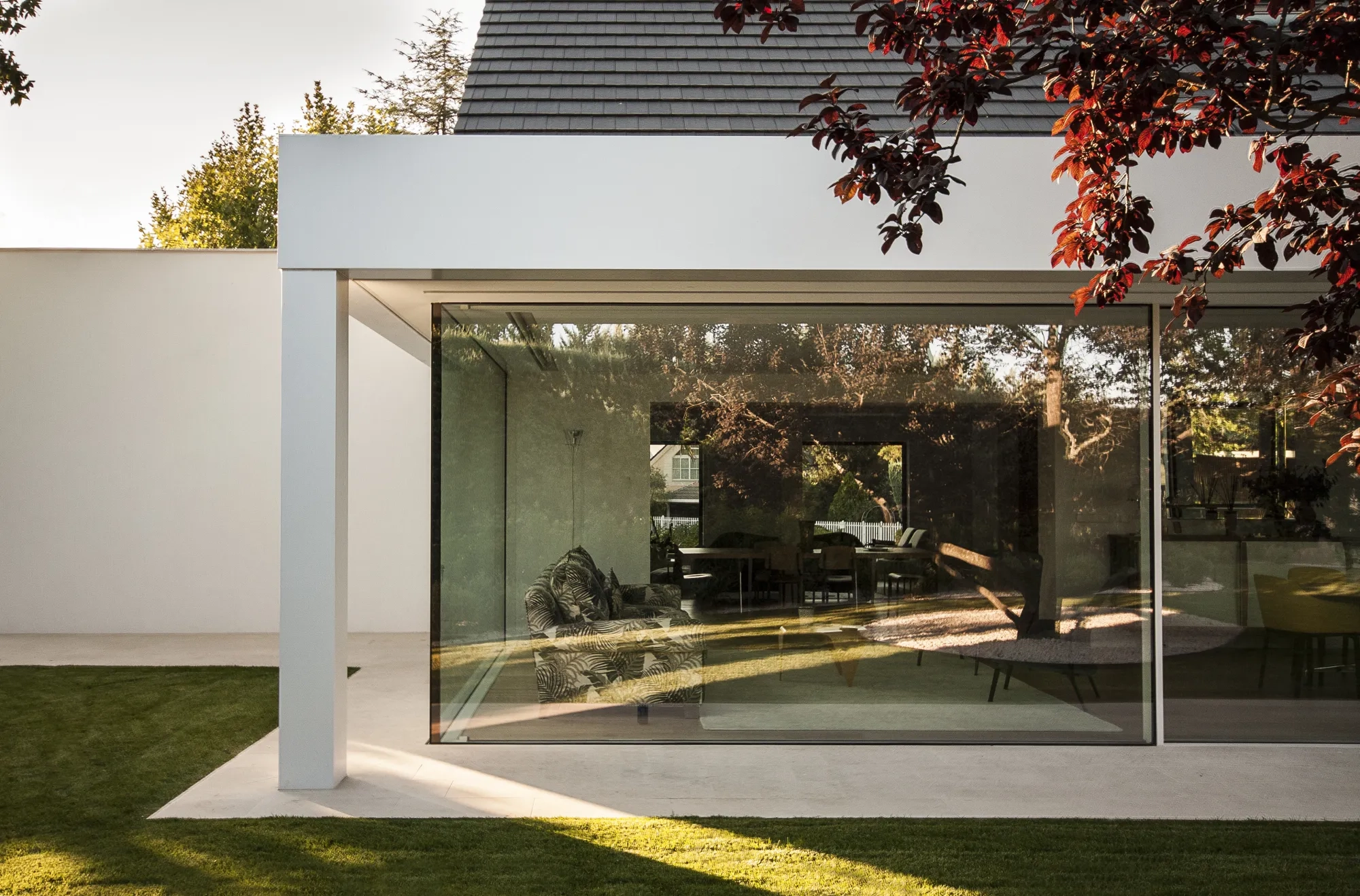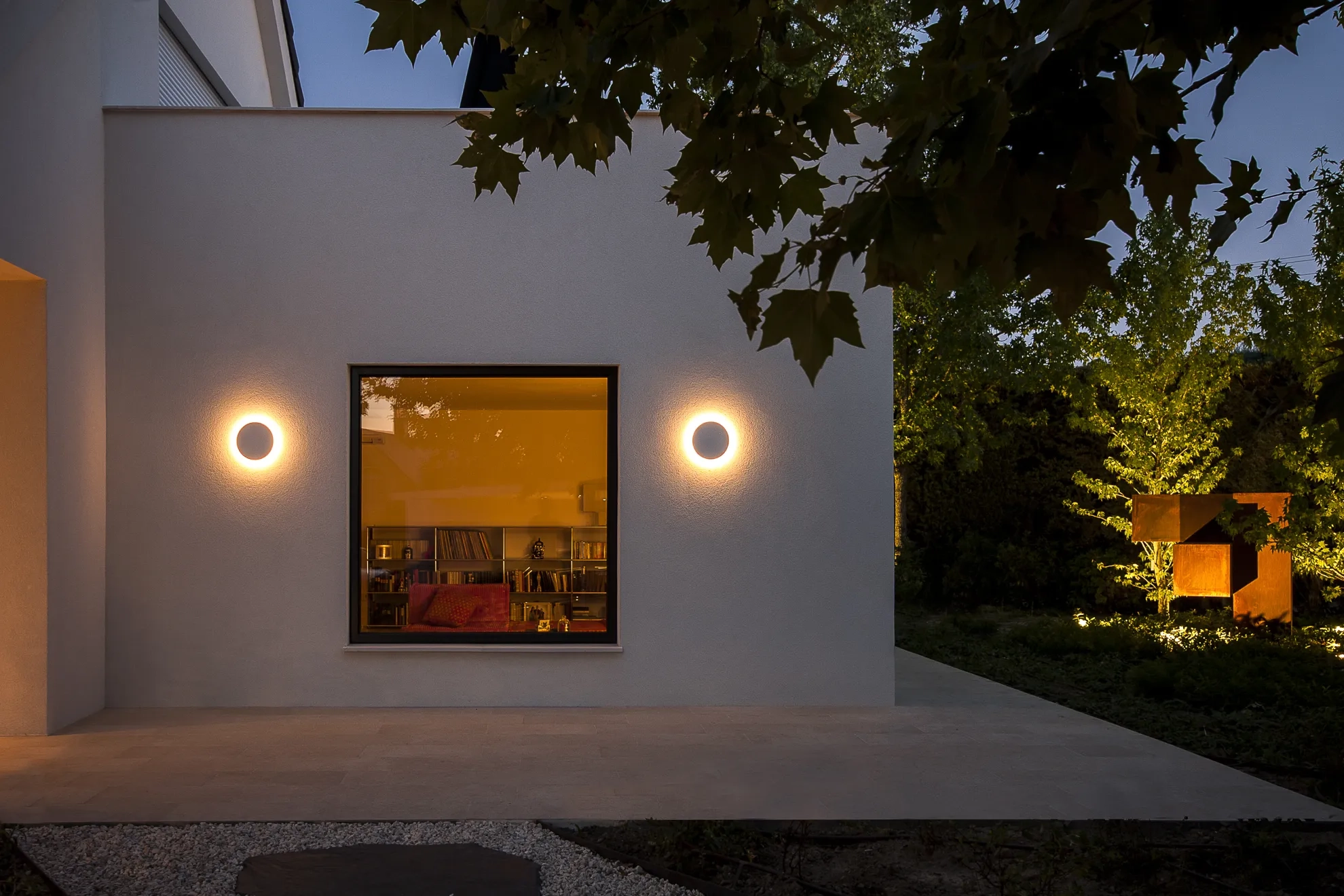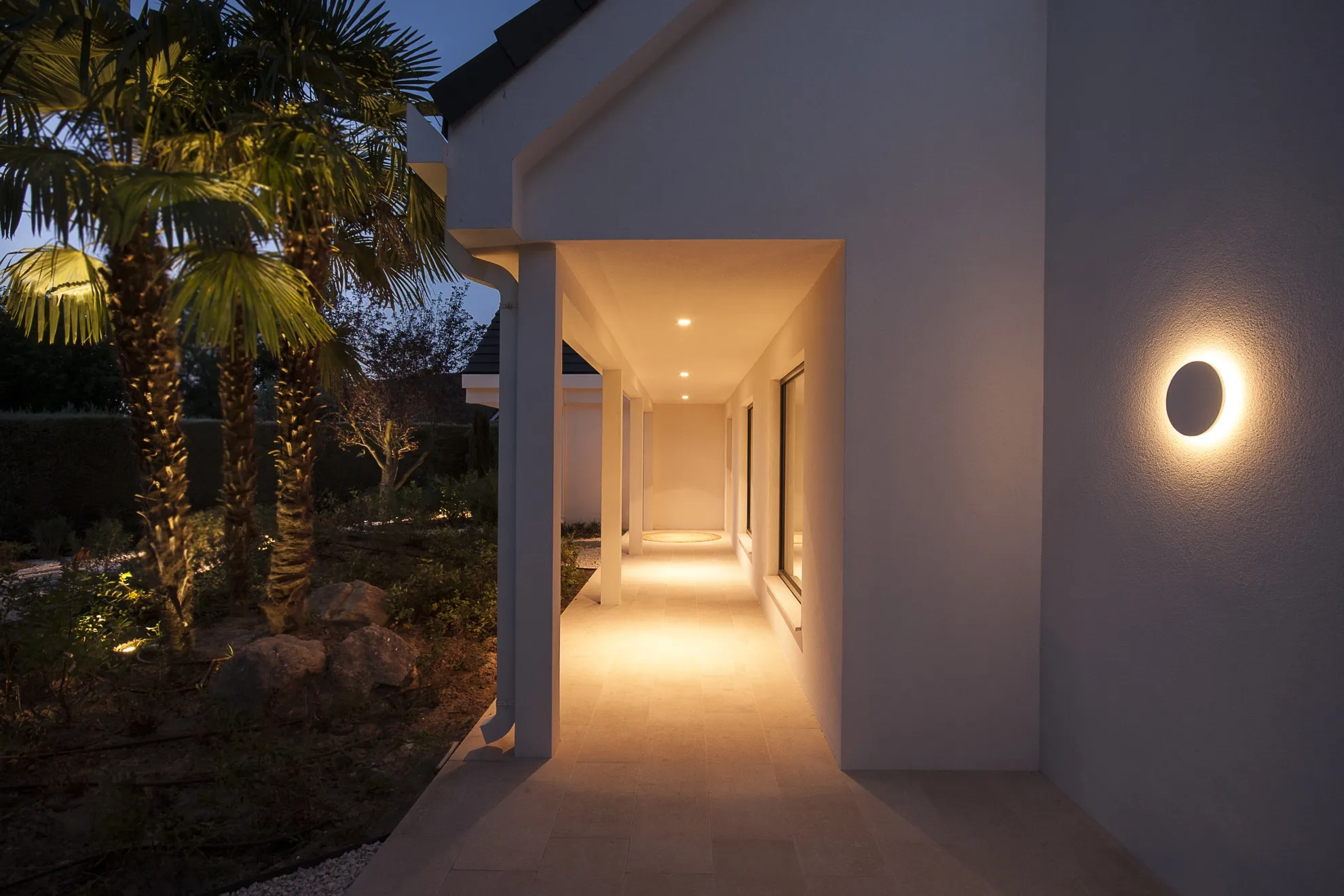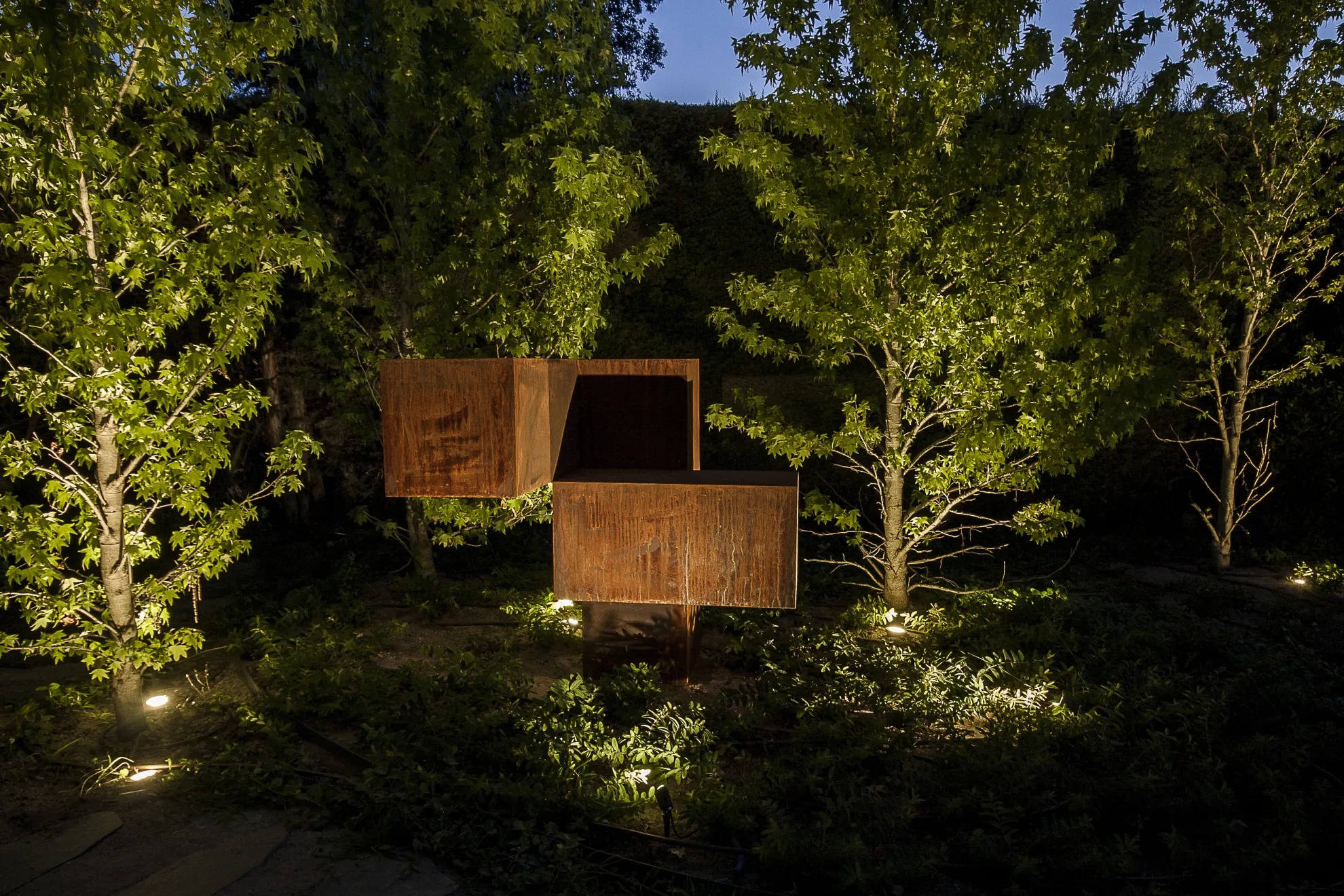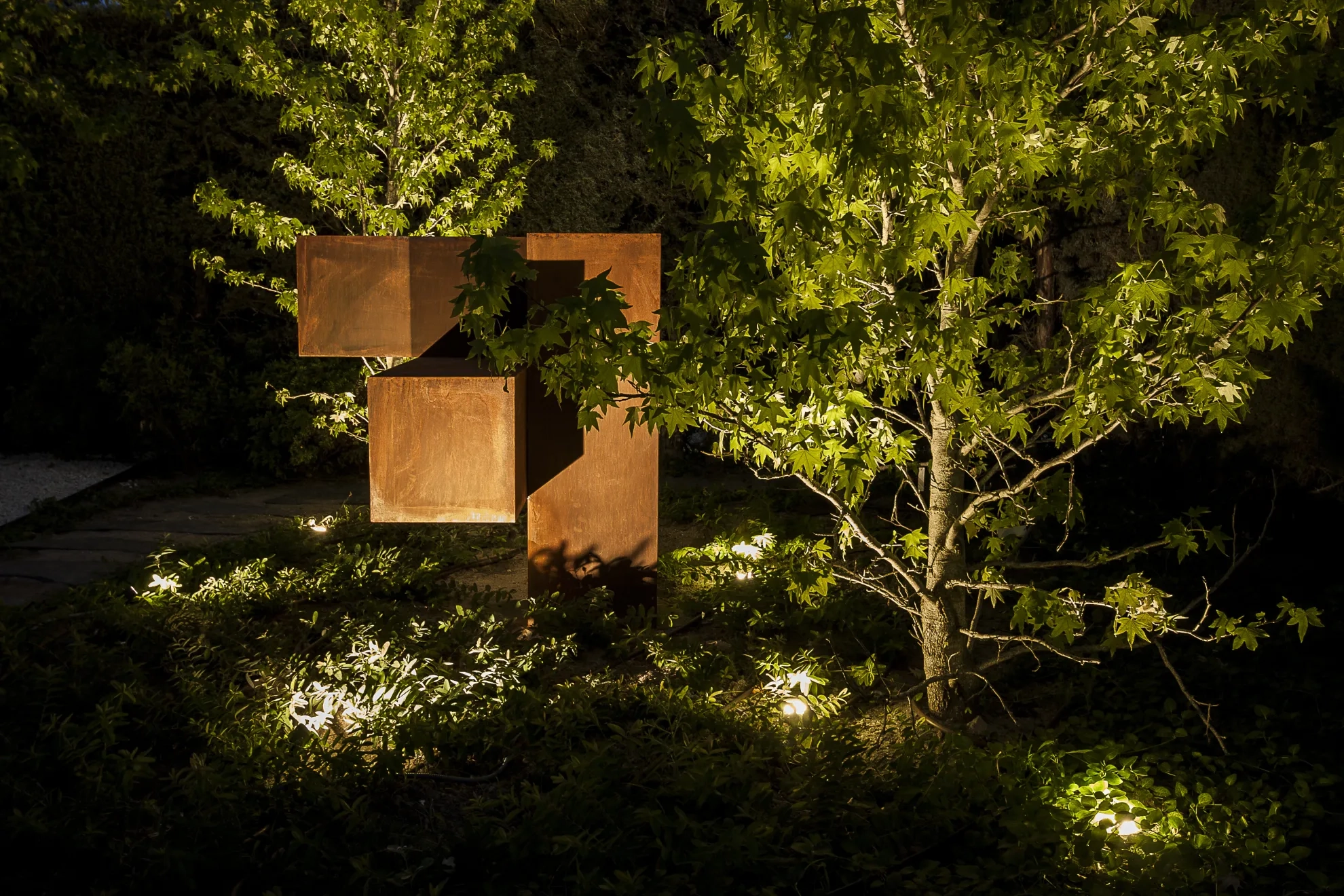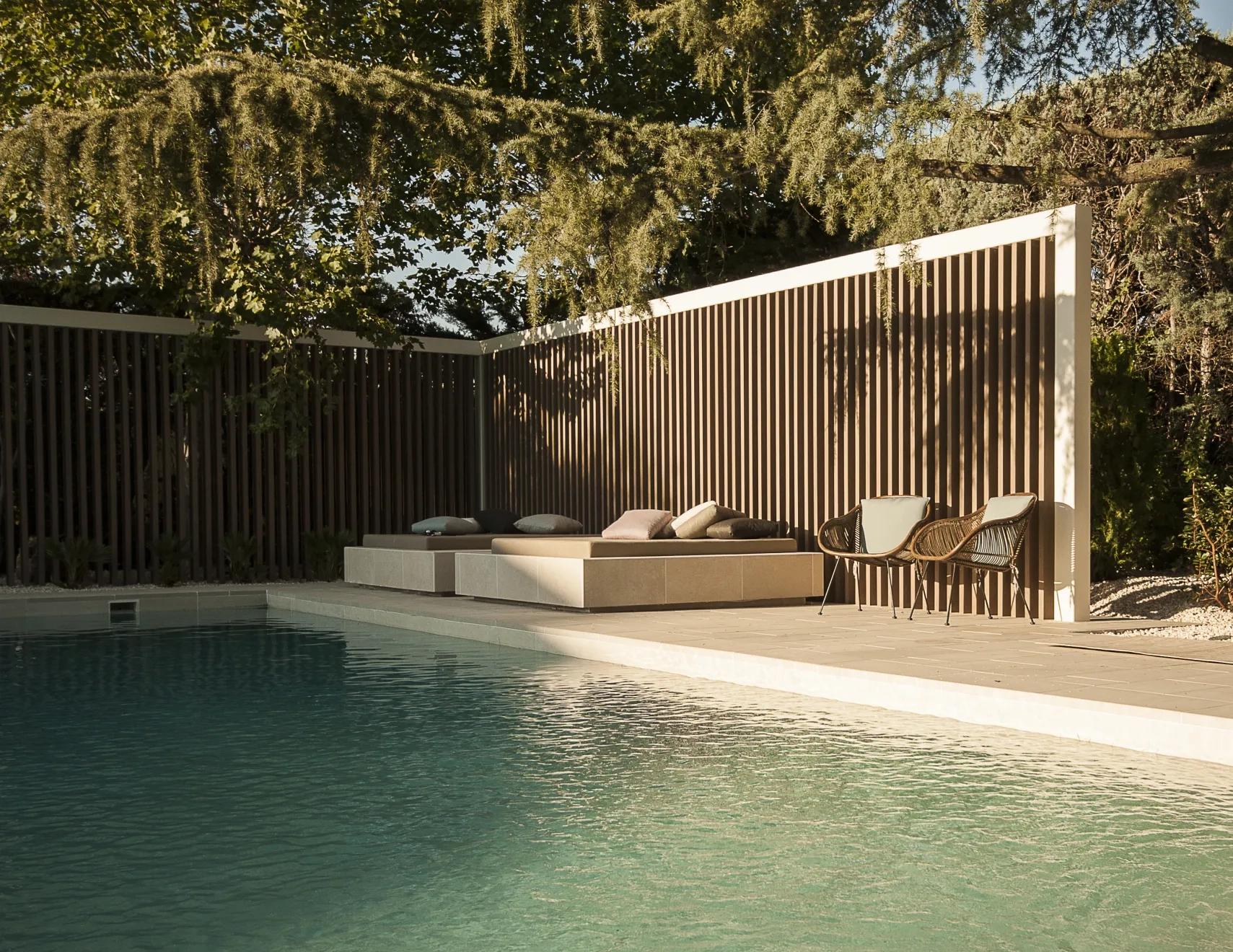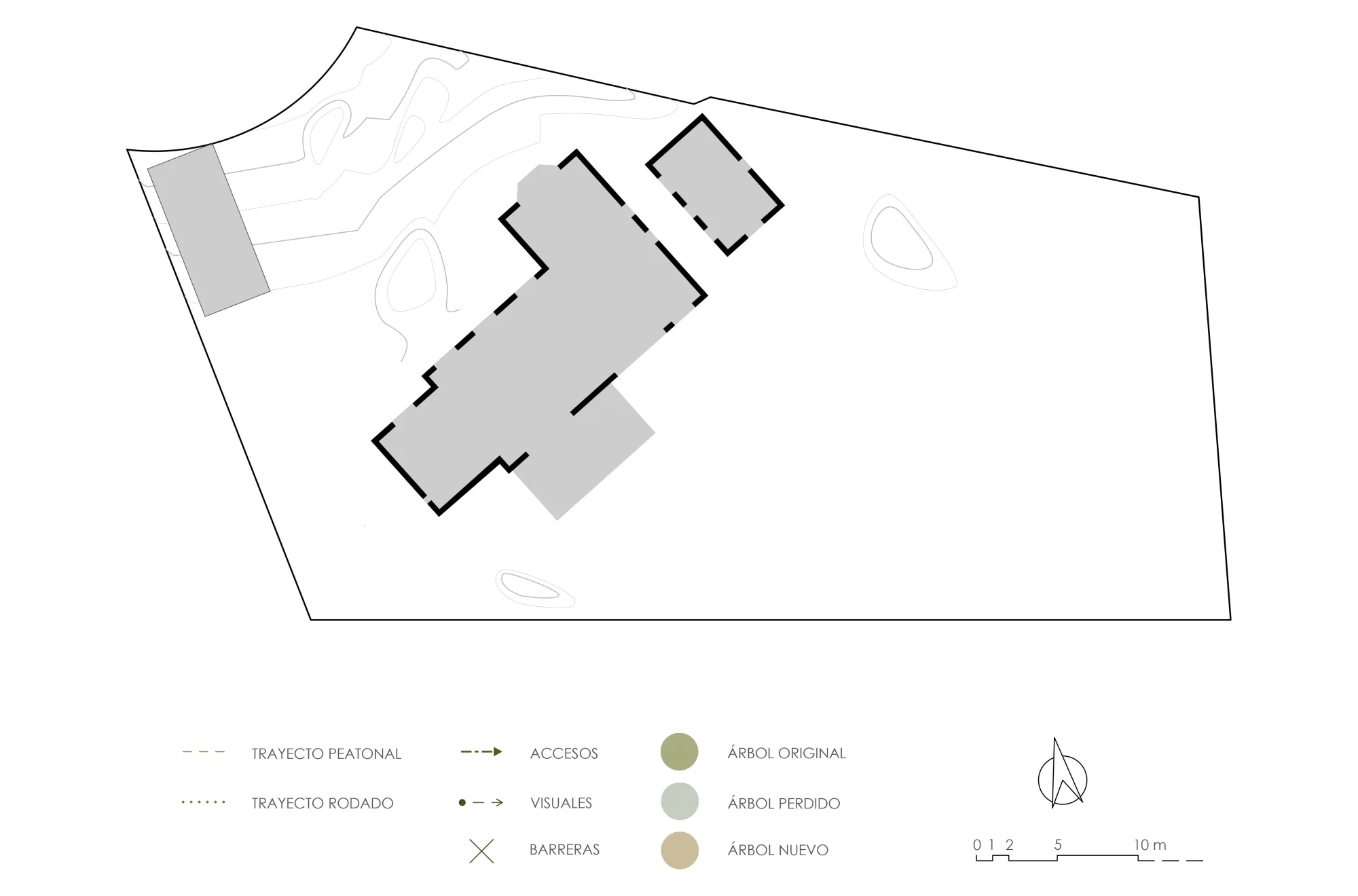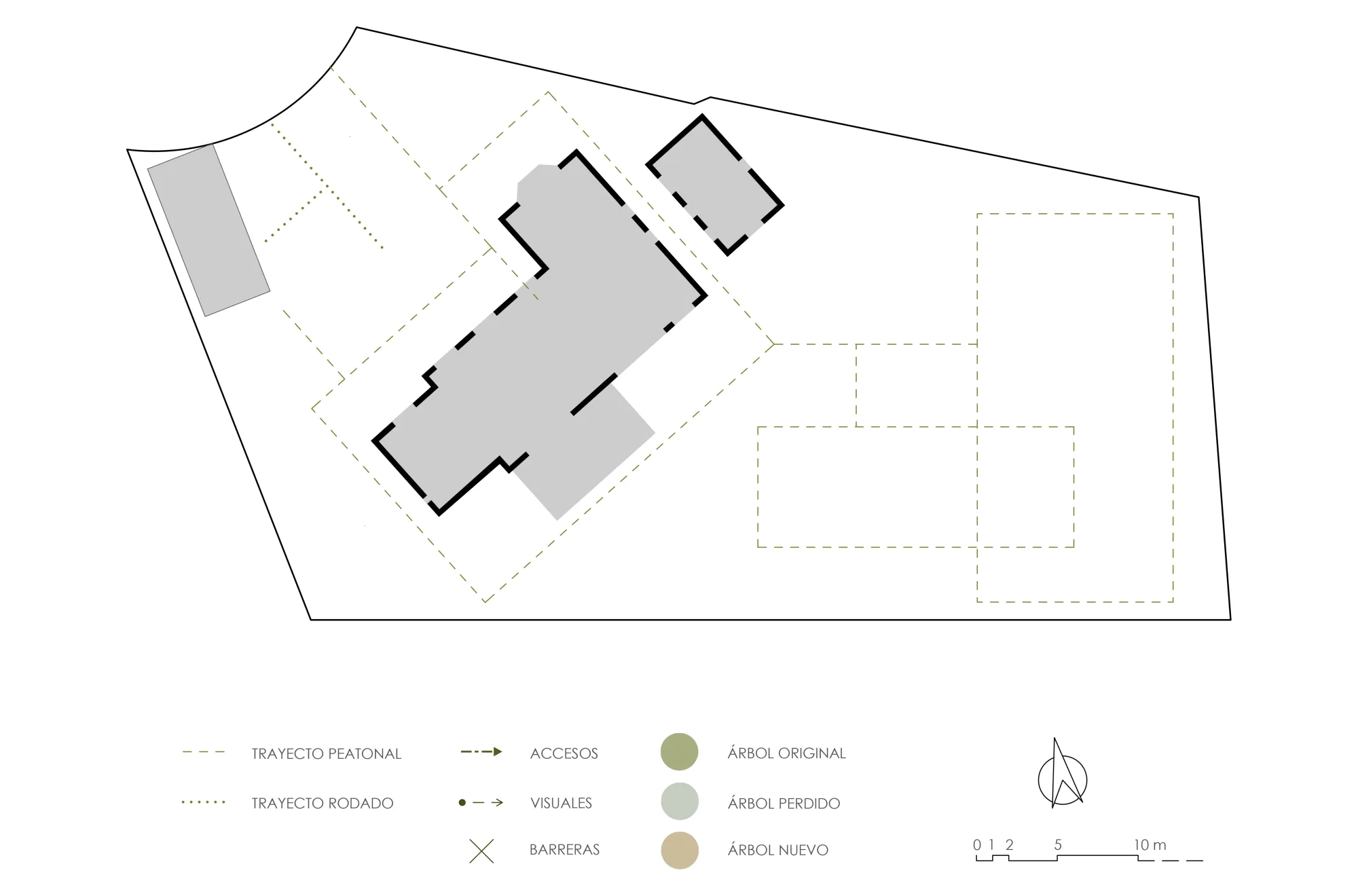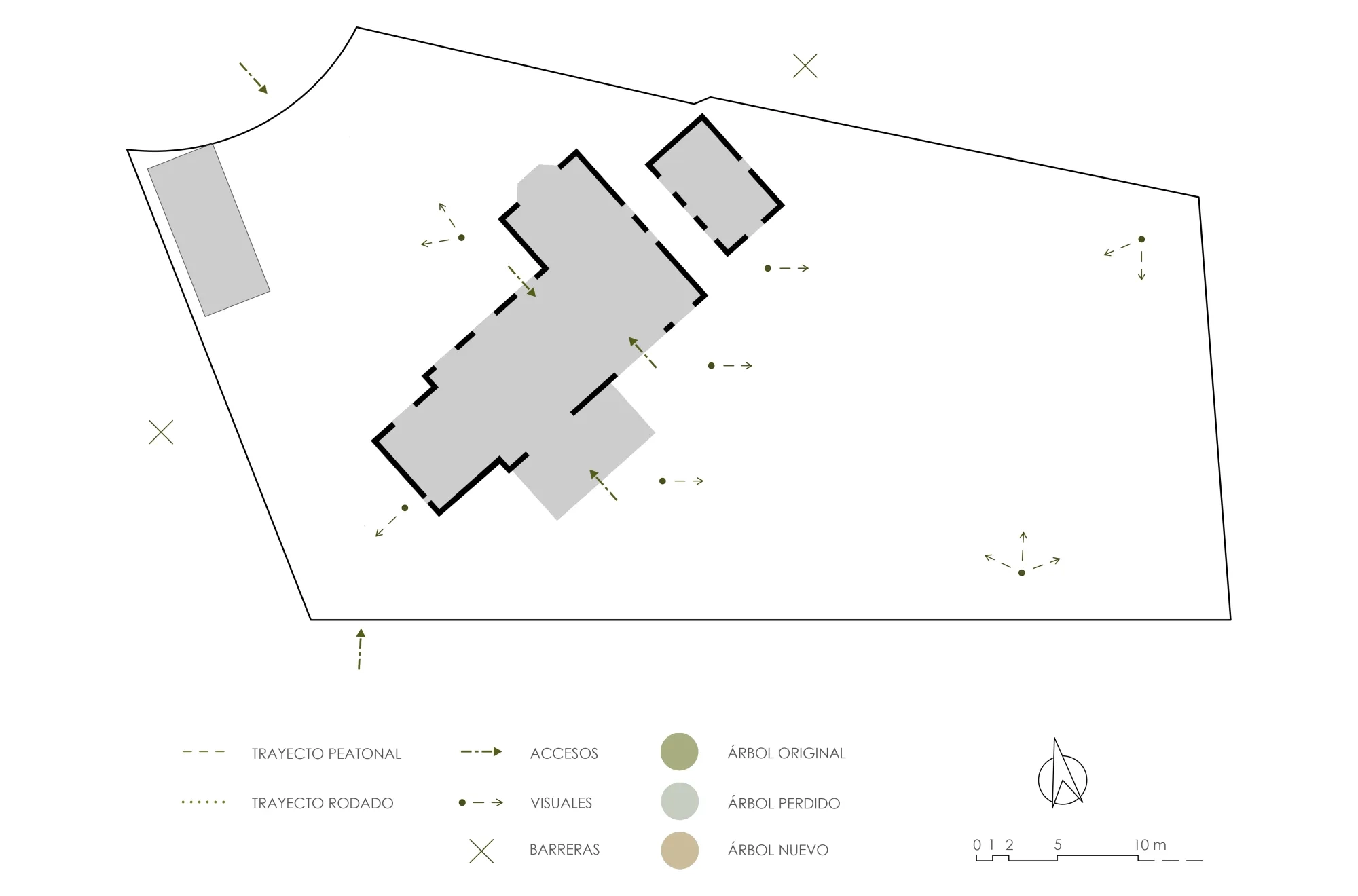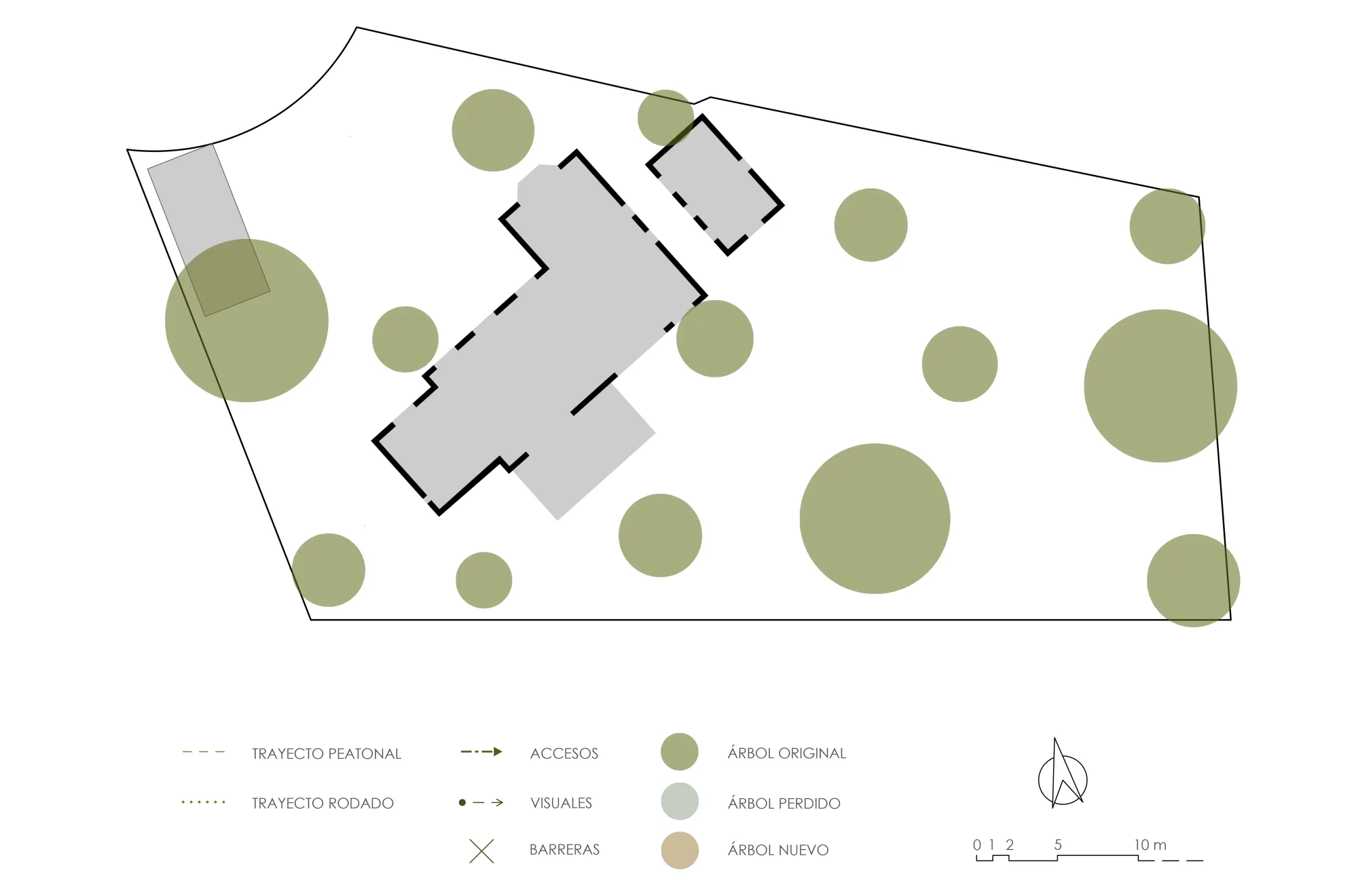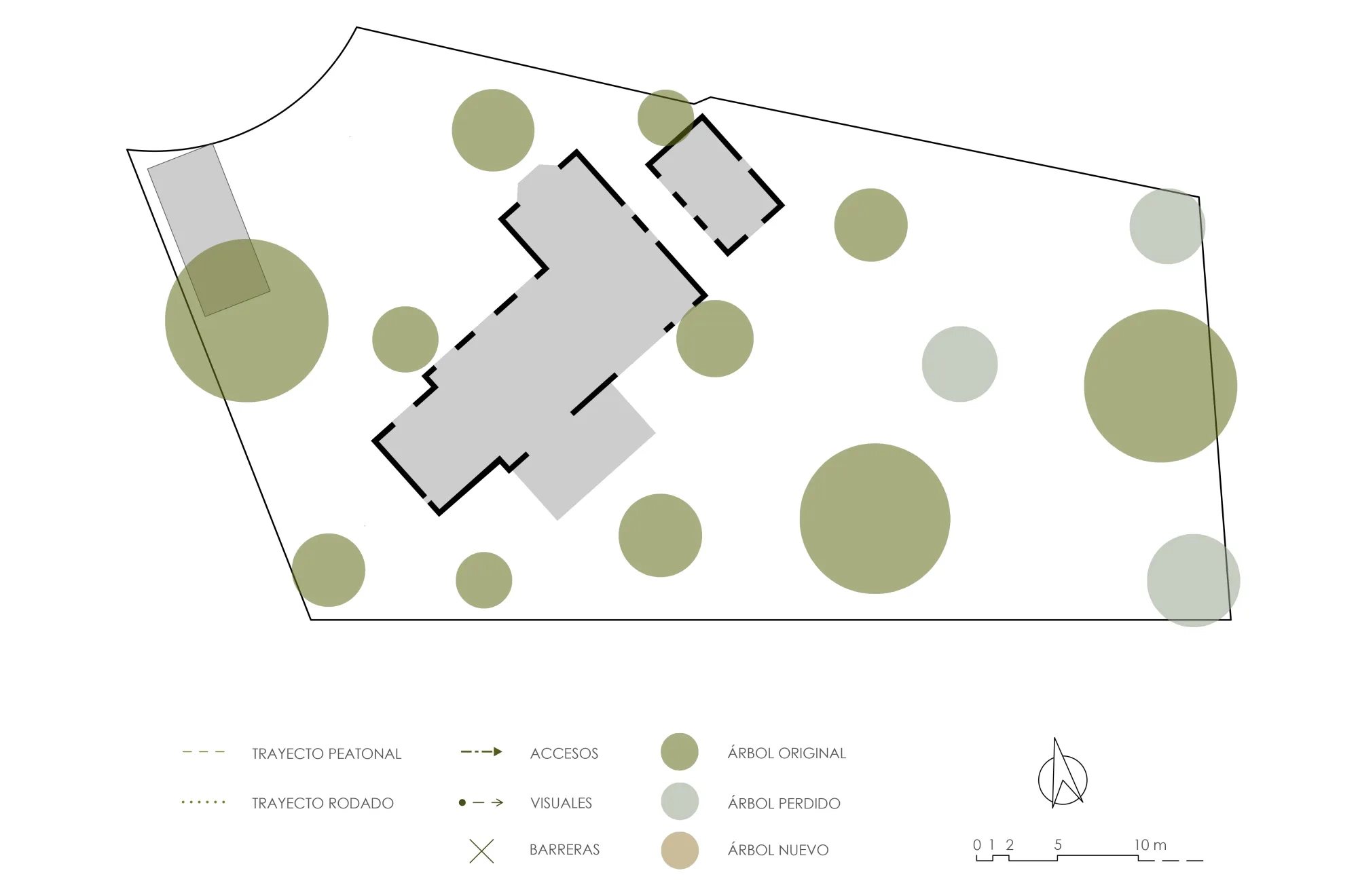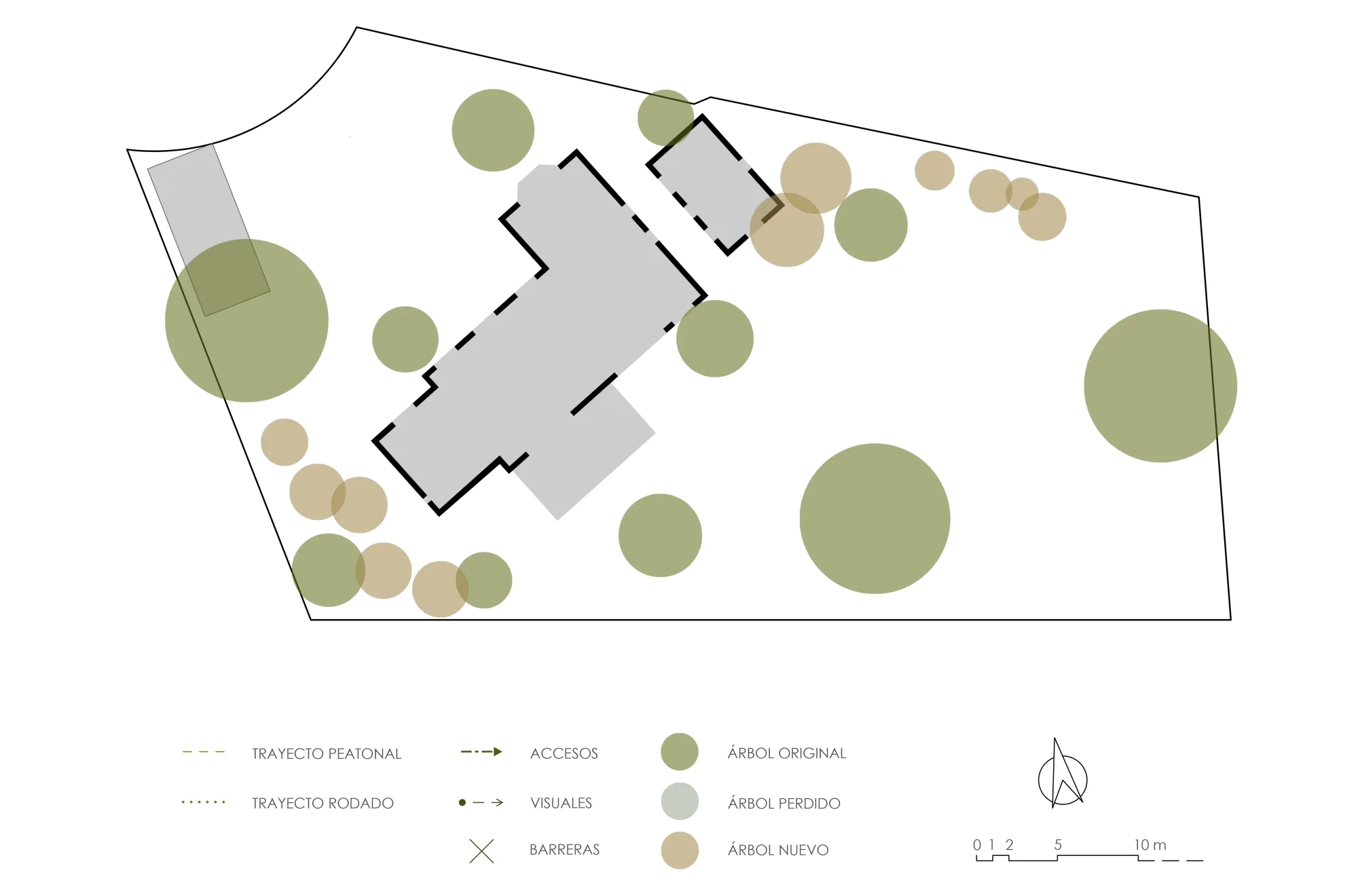Redesign a garden to make it more sustainable
Date
2018-2019
Location
Madrid (Spain)
Type
Residential
Trees
20
Area
2.000 m2
Status
Built
ON THE OLD AND THE NEW
Garden design has evolved significantly in recent years, largely due to growing concern for the sustainability of spaces. A few years ago, private garden design focused mainly on proposals with large areas of lawn or the seemingly senseless mixing of different species of trees and shrubs. Concepts such as energy efficiency, the effectiveness of irrigation systems, or the use of local materials were not commonly taken into account in designs.
Reducing the lawn area is one of the most important aspects in the design of sustainable gardens. Gardens with large lawn areas consume large amounts of water and resources. Similarly, selecting the right plants and designing an efficient irrigation system are also important aspects in designing gardens adapted to the 21st century.
The renovation of swimming pools is also an important issue in the design of sustainable gardens. Deep pools consume large amounts of water and energy, and are impractical for some users.
Times change and gardens can adapt.
A landscape architecture project must be flexible. It should be able to adapt it self to changes in the environment and the peoples life.
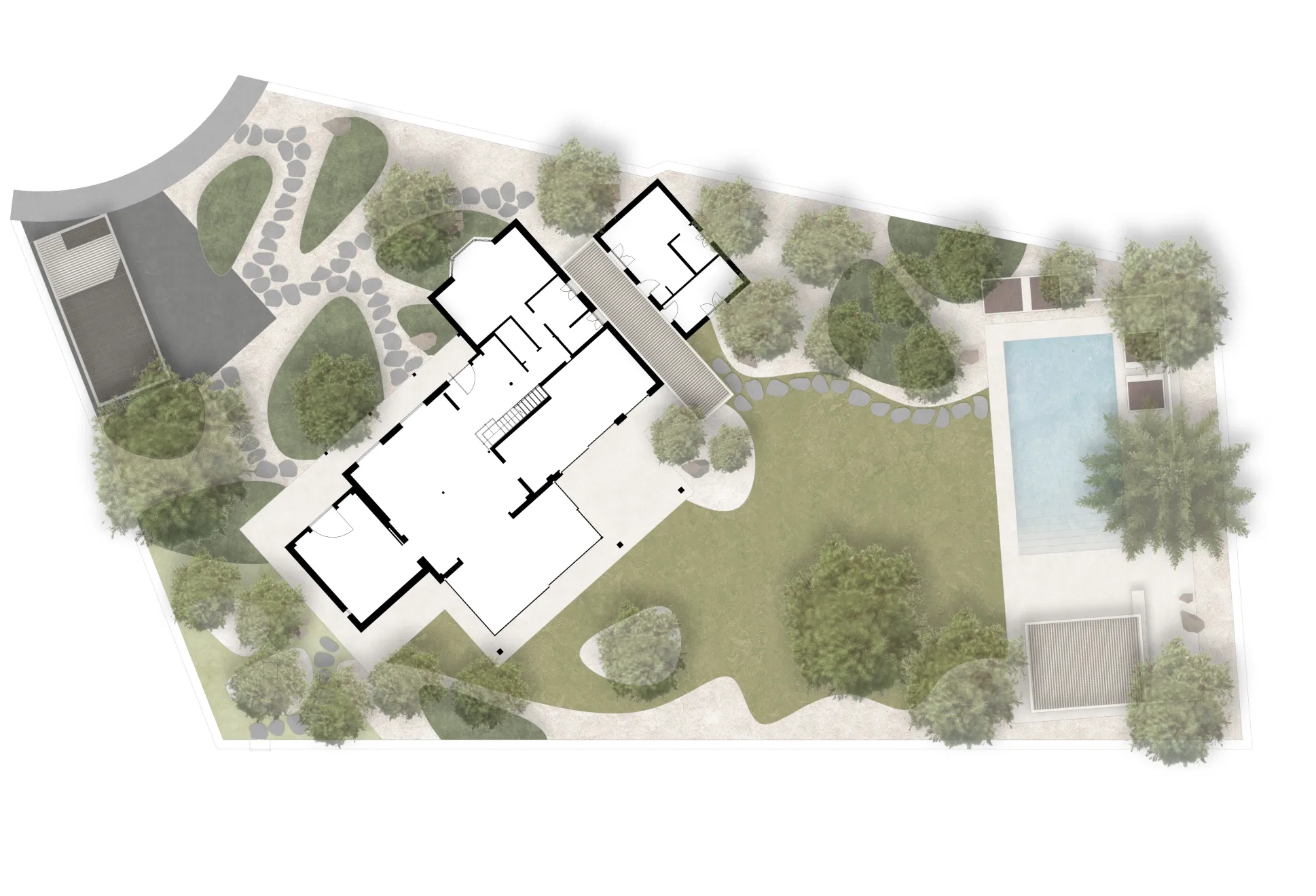
A GARDEN'S LIFECYCLE
Cycles of birth, growth, and death are constantly occurring at gardens. Plants grow, bloom, and eventually die, leaving space for others to grow in their place. This process is natural and necessary, as it allows the garden to renew and evolve over time.
A garden is formed by constant cycles. Day and night. Seasons of the year. Each of these cycles begins and ends. And begins again. And this change should be seen as an opportunity for transformation and growth.
The landscape designer works based on this relationship between the garden and time. The garden reminds us that nothing is permanent.
ABOUT CHANGE
According to Henri Bergson, reality is not static, but constantly changing and transforming. Change is a driving force in the evolution of society and culture. In Creative Evolution, Bergson argues that life is a process of continuous change and that creativity arises from the need to adapt to that change.
An outdoor architecture project must be flexible. It must be able to adapt to changes in the environment and the circumstances of the users. This requires an open and receptive attitude on the part of the landscape designer, to set aside ego and be willing to review and adjust the design based on all variables. The project itself is essentially a process of transformation, of turning an idea into a tangible and functional structure.
